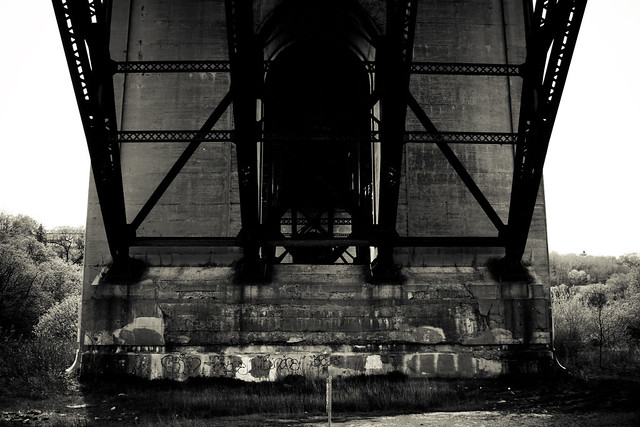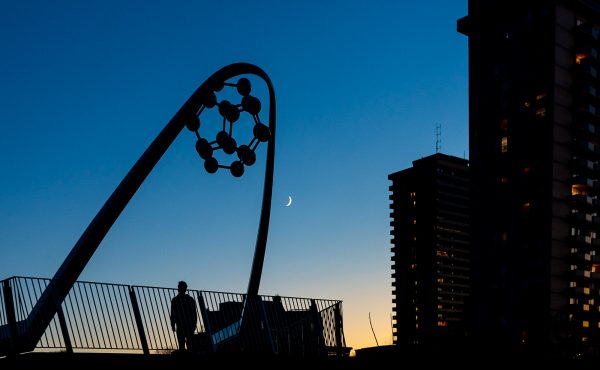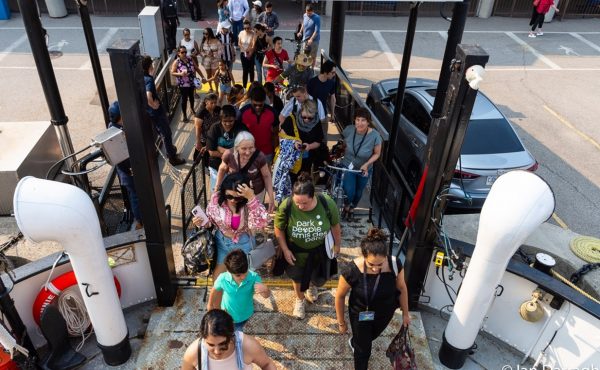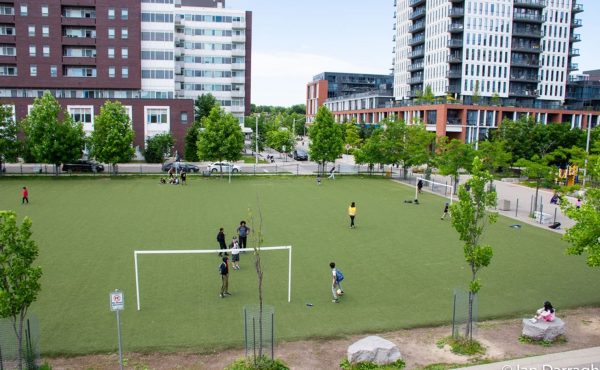Toronto’s ravines are spaces of recreation in every sense of the word. The very term recreation has its roots in Latin meaning ‘to create anew’. The ravines are places we go to bike, walk, reflect, or experience natural space in an urban environment. Yet, from where I live in Toronto ‘natural space’ is often a destination rather than our everyday environments. Ravines and parks are created natural spaces that are separate from urban spaces and often in conflict with development. I experienced this interesting tension while on a Don Valley and Dales ravine walk with friends one Saturday afternoon.
After strolling thorough the ravine for an hour or so my friends and I reached the turning point that brought us back to the street level. As we exited to the street my German friend asked me when we were going to the ravine. As it transpired the definition she found when she translated ‘ravine’ from English to German was different than the experience of walking through a Toronto ravine. Webster’s defines a ravine as a “small narrow steep-sided valley that is larger than a gully and smaller than a canyon and that is usually worn by running water.” What my friend experienced in the Don Valley was not what the dictionary had prepared her for.
That sense of place confusion is what struck us at the ended the ravine section of our walk and headed for tea at Future’s Bakery. Trying to decide if we were in Nature or walking in a re-created natural space in an urban environment was difficult to distinguish, though neither was necessarily unpleasant.
I think these distinctions are important in city space and speak to the value of urban conservation. The Don Valley has been re-created a number of times: in Toronto’s recent urban history it has been straightened south of Gerard Street, drained and filled, saturated with industrial waste, and restored and defended. This story is similar to many other natural spaces in Toronto. Trinity-Bellwoods Park was once home to Trinity College until the college federated with the University of Toronto and the buildings were sold to the city. The gates are an artefact of the college building that was torn down in the 1950s. High Park is an exception in that it was originally created as a natural retreat from the city – being a park was an afterthought. High Park was bequeathed to the city by John Howard whose careful instructions dictated that it must remain as a natural space. A dedicated green space in High Park was not the result of careful city planning but one philanthropist’s dedication to natural conservation.
Making green space a priority in a city as built up as Toronto is difficult. What I would love to see would be a city that valued green space so much that it incorporated natural space into urban development. There is no reason why we have to go to Nature; instead we should experience nature everyday in our urban environments. As our new council starts their term I hope that the way they re-create our city will be one based on principles of resilience, sustainability and integration. The Don Valley is a great example of re-creation, re-imagination, and resiliency. I challenge council make our city the same.
Photo by Michael Clesle





One comment
Ah, the great “divide” between nature and the city. To me, a walk through the industrialized don valley ravine is perhaps the most honest instance of the nature of the urban and urban-nature.
Great article.